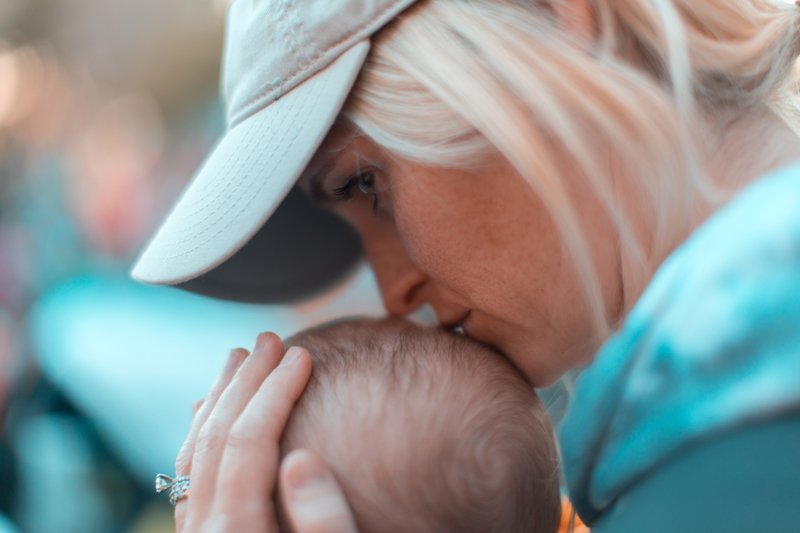In my previous blog, Understanding Birth Trauma, I provided a context and a model for understanding what actually happens during birth trauma and why it’s so debilitating. If you haven’t read that one yet, then have a quick look before reading further. In this blog, I want to share some of my clients’ stories with you because they show the different circumstances that can result in trauma. In the next blog, I’ll be describing how I work with clients to resolve their trauma.
Symptoms of Birth Trauma:
Birth trauma is often followed by feelings of depression. You might be diagnosed with post-natal depression (PND) by your doctor and prescribed anti-depressants. While there’s definitely a role for medication, it’s really treating the symptom rather than the cause. The research shows that birth trauma is one of the leading contributors to PND.
In a small percentage of women, birth trauma results in post traumatic stress disorder, (PTSD) which is a more severe version. Some of the signs of PTSD are:
- Intrusive memories
- Flashbacks to the event
- Episodes of intense distress
- Avoiding anything that reminds you of the trauma
- Hyper-vigilance
- Sleep disturbances
- Emotional numbness
- Irritability and sudden anger
- Physical sensations like sweating, heart racing, nausea and trembling
If you’ve experienced birth trauma, you may be grappling with some or all of these symptoms. It’s important for you to know that you are not the problem. After a difficult birth, many women end up believing it was their failure. It’s simply not true.
The following stories highlight some different ways in which birth can be experienced as traumatic. The names and details have been changed to preserve clients’ anonymity.
Stories of birth trauma
Danielle came to see me when she was pregnant with her second child. I first met her at a social event and she told me that whenever she spoke about her first birth, she couldn’t stop crying. Danielle had undergone a number of interventions (induction, augmentation of labour, forceps) without being included in the decision-making. She didn’t understand why the interventions were happening and the experience left her feeling like she had no power in the situation and that her body had failed her. She was terrified at the prospect of having another baby and clearly showed signs of post-traumatic stress.
Hannah also came to see me after a traumatic first birth. She’d experienced a strong urge to push when not fully dilated and despite pethidine and an epidural, she still had the urge to push. Her cervix was almost there – but not quite. After a very long labour, Hannah underwent a caesarean section because she said felt bullied by two doctors who told her she would kill her baby if she didn’t have one. When Hannah came to see me, she was angry and resentful towards both the doctors and her son. Most distressingly, she said she felt no real connection with her baby; she was going through the motions, but where was the love?
Kerry had conceived with the help of IVF and after a healthy pregnancy that she enjoyed, she experienced an epidural and forceps during the birth of her baby. She tore badly, resulting in a fissure, incontinence and other pelvic floor problems, including no sex life. Kerry was devastated and wondered if her life would ever be the same. She loved her baby but felt like there was some kind of barrier between them and she definitely didn’t want another one.

Another client, Tamara, experienced a long labour, during which she’d felt unsupported by both her partner and her caregivers. When her baby was born blue, there was an emergency resuscitation and he spent 5 days in NICU. During this vulnerable time, a specialist made an unflattering and inappropriate comment about her to a group of students and it was the last straw. The impact of the whole experience had been so shattering she was deeply depressed and doubted that she’d have any more babies.
Sarah had experienced a healthy pregnancy and a straight-forward birth with no complications, at least on paper. However, when she spoke about her birth, her eyes filled up with tears. She couldn’t understand what was ‘wrong’ with her; there were no complications and she loved her baby daughter. Yet she had found the experience of labour and birth unfathomably difficult and painful, as if something was breaking apart inside her. Even though it all looked normal, she told me, I feel traumatised by the birth and I don’t understand why. Maybe there’s something wrong with me. She loved her baby but felt she couldn’t express what was in her heart, like something was holding her back.
As these stories show, each woman’s experience of birth trauma is unique and yet the consequences are similar: shock, distress, disruption to everyday life, feelings of devastation, anger, resentment and powerlessness. For many women, a common tormenting factor is the loss of a sense of connection with their baby, usually accompanied by deep feelings of shame, guilt, failure and a secret belief that they’re a ‘bad’ mother.
My analogy of the warrior lying on the battle field is apt here. If a soldier lay injured and bleeding after having just survived an episode of carnage, no one would expect her to get up and begin looking after a new baby. She would need to be attended to and comforted first; her injuries would need dressing and time to heal, a chance for the shock to subside, and ideally an opportunity to tell the story to someone. Then she’d need ongoing support, encouragement and confidence- building to find her way into her own style of mothering.
When a birth has been traumatic for whatever reason, the baby serves as a constant reminder of the ordeal. Yet there’s intense expectation from self and others to go ahead and mother as if there had been no trauma. This is a true conundrum for a mother. How can we approach this situation more sensitively and with real compassion?

One of the metaphors I use to describe this double-bind is a series of boulders between mother and baby that impedes their ability to connect with each other. Both mother and baby are affected. The love between them is barricaded by the trauma. When the boulders are moved out of the way, the abiding love of a mother for her baby – and of a baby for his or her mother – is free to express itself spontaneously.
Hannah was a good example. After her second session with me, she sent an email saying: “To be perfectly honest, I thought you were up the garden path when you talked about associating my baby with the trauma of his birth but I’m so glad I went along with you. After my session with you, nothing could get me to part with him. I loved him breast-feeding because when he was feeding, I fell in love and bonded with him all over again.”
It is entirely possible to move the boulders obstructing that love out of the way. How do we do this? There are a number of processes that can be effective. That’s the topic of the next blog, so stay tuned!

